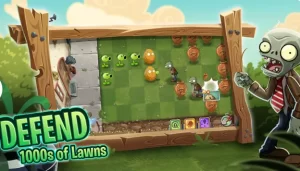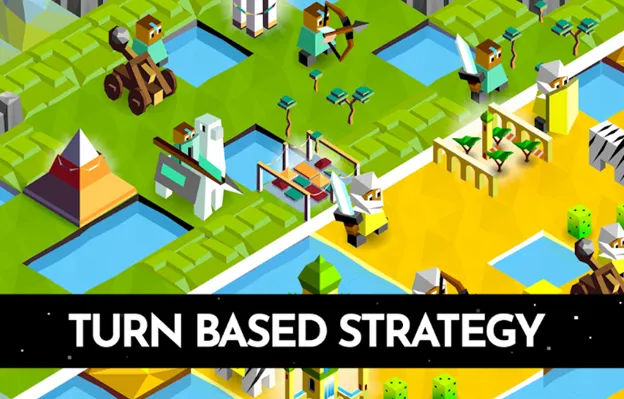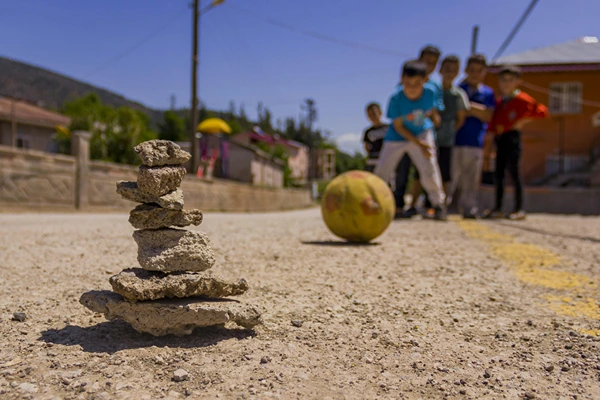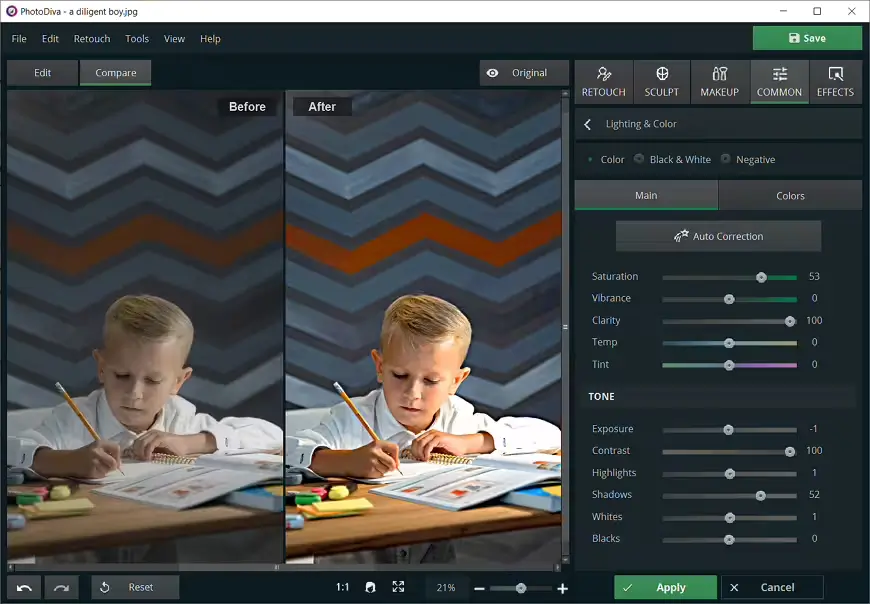When everyone is obsessed with staying connected online, including the highly accessible world of mobile gaming, offline strategy games for the iPhone stand out as a genre that has captured the attention of millions. These games not only allow players to build, manage, and conquer empires while playing offline, but they also offer a deep sense of satisfaction and accomplishment.
Whether you’re at home or on the go, these offline games allow you to create your own legacy without requiring an internet connection.
The Appeal of Strategy Games on iPhone
When it comes to strategy games, the iPhone offers a diverse range of options. From managing vast civilizations to constructing elaborate kingdoms, these games provide a rich and engaging experience. The thrill of outsmarting opponents, whether AI or real players, combined with the sense of accomplishment from managing resources and growing an empire, makes them appealing to many.
Accessible and Convenient
The iPhone’s portable nature allows players to enjoy strategy games whenever they choose. Whether waiting for a friend, sitting in a coffee shop, or on a long commute, you can jump into your empire-building world with ease. The ability to play offline makes it even more convenient, especially when there is no internet connection available.
Complexity and Depth
Many strategy games for the iPhone are known for their depth and complexity. Players are required to think critically about resource management, tactical positioning, and long-term planning. The satisfaction of slowly building up an empire, strengthening it over time, and defeating opponents, adds a layer of emotional engagement not often found in casual mobile games.
The Benefits of Offline Strategy Games
Offline strategy games for iPhone are a great way to enjoy the genre without the need for a constant internet connection. Whether you’re traveling, have limited data, or simply want to enjoy uninterrupted gameplay, these offline games provide several advantages.
No Internet Dependency
One of the main benefits of offline strategy games is that they can be played without requiring an active internet connection. Many mobile games rely heavily on online connectivity for various aspects, such as multiplayer modes or in-game purchases. Offline strategy games, however, allow you to enjoy the full experience without any interruptions. This is especially beneficial for those with limited or unreliable internet access.
Play Anytime, Anywhere
Offline strategy games are ideal for those who travel frequently or spend time in areas with poor or no internet connectivity. Whether you’re on a plane, in a remote area, or just want to avoid distractions while commuting, these games let you dive into your empire-building experience at any time, offering a level of freedom that online games can’t match.
Focus on Long-Term Goals
Strategy games often revolve around building long-term strategies and achieving specific goals. Unlike action or puzzle games, which tend to be more immediate, strategy games require patience and time to develop. Since offline games typically lack constant distractions like notifications or advertisements, players can focus more on their progress and development, resulting in a more fulfilling gaming experience.
Types of Strategy Games for iPhone
There are various types of strategy games available on the iPhone, each offering a unique gameplay experience. Below are some of the most popular types of strategy games that allow players to build their own empire offline.
Empire Building Games
Empire building games, also known as city-building games, are a staple of the strategy genre. These games often involve constructing cities, managing resources, and growing a civilization from the ground up. As players advance, they can unlock new technologies, expand territories, and engage in battles with rival empires. These games often include complex economic systems that require players to manage resources like food, money, and military units.

Turn-Based Strategy Games
In turn-based strategy games, players take turns making decisions, often in the context of a war or battle. These games require a great deal of thought and planning, as each decision can impact the outcome of the game. Players must carefully consider every move, as strategic positioning and resource management are critical to success.

Real-Time Strategy (RTS) Games
Unlike turn-based strategy games, RTS games allow players to make decisions in real-time, where every second counts. RTS games for iPhone typically require players to manage multiple tasks at once, such as constructing buildings, training units, and engaging in combat. These games tend to be fast-paced and require sharp decision-making skills, as the player must react quickly to changing circumstances.

Tower Defense Games
Tower defense games are another popular subgenre of strategy games. In these games, players must build towers or defenses to prevent waves of enemies from reaching a specific point. These games often involve strategic placement of various types of towers, each with different abilities to stop incoming enemies. Tower defense games are perfect for players who enjoy strategic thinking with a more relaxed pace.

How Strategy Games Help You Build Your Legacy
Building a legacy is about creating something that stands the test of time, and this concept translates well into strategy games. In these games, players often start with limited resources and gradually build up their empire. The feeling of watching your empire grow and evolve into something that could rival the greatest civilizations in history is a key part of the allure.
Strategic Thinking and Planning
To succeed in strategy games, players must think strategically, making decisions based on long-term consequences rather than short-term rewards. This type of critical thinking translates to real-life scenarios, as players develop skills such as planning, prioritization, and resource management. These skills are essential for building and maintaining a legacy, both in the game and in the real world.
Overcoming Challenges
As you progress in a strategy game, challenges arise in the form of rival empires, limited resources, and unexpected events. These obstacles require players to adapt and come up with innovative solutions. Overcoming these challenges fosters a sense of accomplishment and drives players to continue progressing. In real life, this mirrors the process of building a successful legacy, where setbacks are inevitable, but perseverance leads to success.
Creating a Unique Empire
In many strategy games, the choices players make shape the trajectory of their empire. From how they allocate resources to how they engage with other factions, every decision contributes to the development of a unique civilization. This level of customization gives players a sense of ownership and pride in their empire, reinforcing the idea of building a lasting legacy.
Popular Offline Strategy Games for iPhone
If you’re looking to start your empire-building journey, here are some of the best offline strategy games for the iPhone that can help you build your legacy.
Clash of Clans
Clash of Clans is one of the most popular strategy games on the iPhone. Players build their own villages, train armies, and engage in wars with other players or AI opponents. The game offers both online and offline modes, with the offline component allowing players to continue building and managing their villages without needing a constant internet connection.

Lords Mobile
Lords Mobile is another fantastic offline strategy game that lets you build and conquer empires. The game features a rich mix of real-time strategy and role-playing elements, where players can develop their cities, raise armies, and engage in massive battles. While multiplayer features require an internet connection, the single-player campaign allows for uninterrupted offline play.

Civilization VI
Civilization VI is a renowned empire-building game that has made its way to the iPhone. In this game, players manage an entire civilization, guiding it from ancient times into the modern era. The game’s deep strategic elements, combined with its offline mode, make it a perfect choice for those looking to create a legacy.

The Battle of Polytopia
The Battle of Polytopia is a fun, turn-based strategy game that challenges players to conquer a map by building cities, advancing technologies, and engaging in battles with rival tribes. The game is perfect for quick, yet strategic gameplay sessions, and it offers an offline mode for uninterrupted play.

FAQs about Offline Strategy Games for iPhone
Can I play offline strategy games on my iPhone without an internet connection?
Yes, many strategy games on iPhone offer offline modes, allowing you to continue your gameplay even when you don’t have an internet connection.
What types of strategy games are available for the iPhone?
iPhone offers various types of strategy games, including empire building, turn-based strategy, real-time strategy (RTS), and tower defense games.
Are offline strategy games as engaging as online games?
Yes, offline strategy games are designed to be engaging, with many offering deep gameplay mechanics, strategic planning, decisions making, and a sense of progression that rivals online games.
Can playing strategy games improve my real-life skills?
Yes, strategy games can help develop critical thinking, resource management, and decision-making skills, which are valuable in real-life situations.
Conclusion
Strategy games for the iPhone are the perfect tool for building your legacy. These games allow you to create, manage, and conquer empires while honing your skills in planning, resource management, and strategic thinking. With the ability to play offline, you can enjoy these games anytime and anywhere, making them ideal for players on the go. Whether you’re a fan of empire-building or real-time strategy, there is a game for every type of strategist. So why wait? Begin building your empire today and leave a legacy that will last for years to come.




















